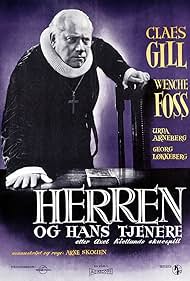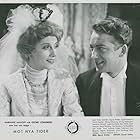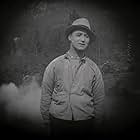The master and his servants is a classic film from Norwegian film director Arne Skouen from 1959 is something as rare as a court drama about a bishop, Sigurd Helmer, which is accused of writing letters. Some of the great court dramas came out in the fifties, but this differs quite a lot in more that that way, still being a classic court drama in form, written in 1955 by Axel Kielland, based upon real events from Sweden.
This film also show what happened while it's told in the court, with back glimpses along the way, which gives the story a good narrative up build. The film, which is filmed in black and white, which also seems appropriate, was nominated to the Golden Bear at the Berlin film festival in 1959.
The newly elected bishop Sigurd Helmer, greatly played by Claes Gill, is upon his ordination accused by his losing rival of writing anonymous letters which made him ordained. Upon the start of the trial, it's only his daughter Agnes (Anne Lise Tangstad) believing he didn't write the letters. The court drama is all about the honor of the bishop. We also meet Wenche Foss in a well played role as the bishops' wife, awarded the national film critics prize in Norway the same year. It adds to the drama that his opponent is to merry the accused bishop's daughter.
The true story behind this film is from 1952, when the Swedish bishop Dick Helander which after a trial was forced to quit due to a court rule which said he had written slender about two of his opponents in front of his ordination. His finger prints was found only on two of 235 anonymous letters, but he was still ruled guilty by the court. The case is one of the most debated in Swedish history. In 2000 the letters was reexamined by forensic detectives, which found that nine of the letters had the bishops DNA, and the envelopes had been licked by one single person, and not him. These methods would back then made sure for acquittal of Helander.
Axel Kielland's play which lead into this film four years later, was was a great success in both Norway, Sweden and Finland. It was also made into a radio play. The film has a tense mode, and is one of acclaimed film maker Skouen's best. The actors do a great job, and even though the film is great in black and white, I'd really like to see this in color. That would have made the film more timeless in a way.
The film is interesting still today in more than one way. It's a must for lovers of court dramas and for those who are fascinated by court injustice.



